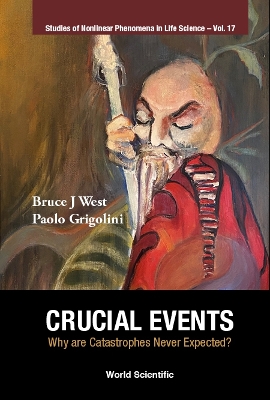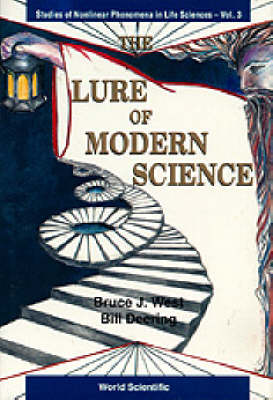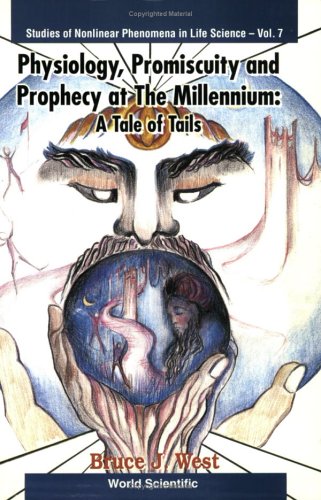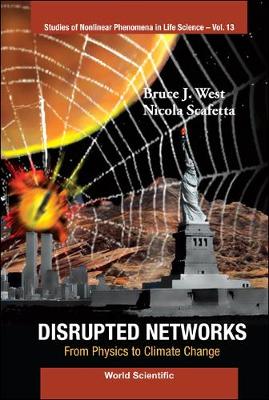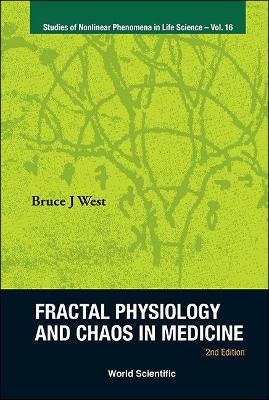Studies Of Nonlinear Phenomena In Life Science
4 primary works • 5 total works
Book 0
Crucial Events: Why Are Catastrophes Never Expected?
by Bruce J West and Paolo Grigolini
Published 28 May 2021
A nonsimple (complex) system indicates a mix of crucial and non-crucial events, with very different statistical properties. It is the crucial events that determine the efficiency of information exchange between complex networks. For a large class of nonsimple systems, crucial events determine catastrophic failures - from heart attacks to stock market crashes.This interesting book outlines a data processing technique that separates the effects of the crucial from those of the non-crucial events in nonsimple time series extracted from physical, social and living systems. Adopting an informal conversational style, without sacrificing the clarity necessary to explain, the contents will lead the reader through concepts such as fractals, complexity and randomness, self-organized criticality, fractional-order differential equations of motion, and crucial events, always with an eye to helping to interpret what mathematics usually does in the development of new scientific knowledge.Both researchers and novitiate will find Crucial Events useful in learning more about the science of nonsimplicity.
Book 3
The authors describe mostly in non-technical language the development of a new scientific paradigm based on nonlinear deterministic dynamics and fractal geometry. The concepts from these two mathematical disciplines are interwoven with data from the physical, social and life sciences. In this way rather sophisticated mathematical concepts are made accessible through experimental data from various disciplines, and the formalism is relegated to appendices. It is shown that the complexity of natural and social phenomena invariably lead to inverse power law distributions, both in terms of probabilities and spectra. This book tries to show how to think differently about familiar phenomena, such as why the bell-shape curve ought not to be used in teaching or in the characterization of such complex phenomena as intelligence.
Book 7
Physiology, Promiscuity And Prophecy At The Millennium: A Tale Of Tails
by Bruce J West
Published 7 December 1999
This book concerns the development of a theory of complex phenomena; using such concepts as fractals; chaos; and fractional derivatives; but; most important; the idea of an allometric control process is developed. In summary the theory attempts to explain why the distribution in the intensity of wars is the same as the relative frequency of the number of words used in languages and the number of species evolved over time from one or a few remote ancestors. The theory also describes the similarity in the variability of the number of births to teens in Texas to the number of sexual partners in homosexual liaisons. The data in both of the aforementioned categories are shown to have long-term memory; and it is this memory that also gives rise to inverse power laws in such physiological phenomena as the interbeat interval distribution of the human heart; the interstride interval distribution in the human gait; and memory in DNA sequences.
Book 13
Disrupted Networks: From Physics To Climate Change
by Bruce J West and Nicola Scafetta
Published 22 March 2010
This book provides a lens through which modern society is shown to depend on complex networks for its stability. One way to achieve this understanding is through the development of a new kind of science, one that is not explicitly dependent on the traditional disciplines of biology, economics, physics, sociology and so on; a science of networks. This text reviews, in non-mathematical language, what we know about the development of science in the twenty-first century and how that knowledge influences our world. In addition, it distinguishes the two-tiered science of the twentieth century, based on experiment and theory (data and knowledge) from the three-tiered science of experiment, computation and theory (data, information and knowledge) of the twenty-first century in everything from psychophysics to climate change.This book is unique in that it addresses two parallel lines of argument. The first line is general and intended for a lay audience, but one that is scientifically sophisticated, explaining how the paradigm of science has been changed to accommodate the computer and large-scale computation. The second line of argument addresses what some consider the seminal scientific problem of climate change. The authors show how a misunderstanding of the change in the scientific paradigm has led to a misunderstanding of complex phenomena in general, and the causes of global warming in particular.
Book 16
This exceptional book is concerned with the application of fractals and chaos, as well as other concepts from nonlinear dynamics to biomedical phenomena. Herein we seek to communicate the excitement being experienced by scientists upon making application of these concepts within the life sciences. Mathematical concepts are introduced using biomedical data sets and the phenomena being explained take precedence over the mathematics.In this new edition what has withstood the test of time has been updated and modernized; speculations that were not borne out have been expunged and the breakthroughs that have occurred in the intervening years are emphasized. The book provides a comprehensive overview of a nascent theory of medicine, including a new chapter on the theory of complex networks as they pertain to medicine.
